Stairfoot and the Railways
The construction of the railways in and around South Yorkshire was as a result of a systematic need to improve the transport system in the area, exploiting and mining the rich seams of black diamonds (coal) from the numerous collieries and transporting the coal to meet the requirements of Britain’s industrial revolution and for export.
The road system in the 1700’s was appalling with many roads being no more than cart tracks. The building and opening of the canals in the late 1700’s and early 1800’s i.e. The Barnsley Canal opened in 1799 and its branch Barnby Basin, Cawthorne in 1802 and the Dearne and Dove Canal with it’s branches to Elsecar and Worsborough in 1804, meant for the first time , coal and other goods e.g. raw materials for the expanding glass industry could be transported in large quantities, giving access to industry and the ports.
When a colliery was not situated adjacent to a canal, tramway systems were built to convey the coal from the pithead to the canal, therefore the principle of moving goods/coal by rail was firmly established, the first railways were built to transport goods and passengers in the 1820’s i.e. Stockton to Darlington in 1825, Liverpool to Manchester in 1830 by the famous engineers George and Robert Stephenson. What followed was known as the Railway Mania of the 1830’s, 1840’s, 1850’s and so forth where railways were built in significant numbers in Britain. The canals continued to prosper alongside the railways during the 1800’s but at the beginning of the twentieth century, high maintenance costs, and breaches in the canal walls led to their demise particularly in the Barnsley area. The reason being due to subsidence from mining activity, therefore the primary reason for their construction i.e. transportation of coal instigated their demise; and by the 1930’s with the exception of small sections, they were abandoned.
The first railway to go through Stairfoot was built by the South Yorkshire Railway operating from Doncaster to Barnsley opened in July 1851; but the station was situated originally, across in the area adjacent to Deputy Row, on Wombwell Lane did not open until September 1851, and was given the name ‘Ardsley’. As previously mentioned the main purpose of the railway was to transport mainly coal (see SSHPG Archive), this lists the collieries, which the South Yorkshire Railway, its subsequent successors, along with other railways which had connections with Stairfoot. Passenger traffic was of secondary importance to emphasise this, The locomotives and passenger stock was operated and owned by the Great Northern Railway. In 1854, the South Yorkshire Railway line from Sheffield via Birdwell and Dovecliffe opened connecting at Aldham Junction then running through Stairfoot to Barnsley on this occasion using their own locomotives and stock. The locomotive used on this inaugural run was named ‘Fitzwilliam’ and the driver being Joshua Slowen (see SSHPG Archive). Again the prime purpose of the railway was the transportation of coal (see SSHPG Archive map of area detailing the lines built by the South Yorkshire Railway 1849-1864). In 1879 (after incorporation into Manchester Sheffield and Lincolnshire Railway in 1864) the Aldham Curve came into use from New Oaks Junction to Wombwell Main junction, allowing direct running to and from Stairfoot instead of previously having to reverse at Aldham Junction.
The next railway to commence from Stairfoot was the Barnsley Coal Railway in 1870, terminating initially at Applehaigh lane near Notton and finally in 1882 opening through Ryhill ,Wintersett, joining the West Riding & Grimsby line at Nostell. To allow trains to run direct from Barnsley to Leeds and vice-versa, the Stairfoot curve was built branching off at Old Oaks Junction and connecting with the line running direct from Stairfoot at Oakwell Junction, Hoyle Mill (now part of the Dearne Valley Park).
A mineral line opened in 1892 which branched off the Coal Railway at Stairfoot North Junction bridging Grange lane, running under the Hull and Barnsley line, carrying on adjacent to Ardsley tunnel, under the Midland line at Sunny bank through Schorah Wood, over the Midland line at Storrs Mill, then branching off to serve the collieries at Grimethorpe, Houghton Main and Dearne Valley.
The final railway to run directly into Stairfoot terminating at Stairfoot junction (station box) was the Hull and Barnsley railway, whose ambitions to run directly to Barnsley and westwards to Manchester and Liverpool were thwarted, finishing as a passenger service from a one platform station as part of the extensive Midland station at Cudworth and terminating as a freight line at Stairfoot Junction signal box ie the station The line opened in 1885.
The current Barnsley- Sheffield line terminated initially at Thorncliffe Works, Chapeltown from Sheffield opening in 1893, then being extended to Barnsley in 1897. The line bridges Hunningley Lane and Doncaster Road, and enjoys a thriving passenger service to Leeds, Penistone, Huddersfield, Wakefield and Sheffield.
To complete the railway scene at Stairfoot ,was the building of what was known as the Chapeltown loop line, opened by the Midland railway in 1899 to alleviate congestion of traffic at Swinton and Wath. The line branched off at Cudworth South Junction over Sunny Bank viaduct through Ardsley Tunnel over Stairfoot by means of an extensive brick viaduct connecting with the Barnsley- Sheffield line at Monkspring Junction, allowing trains to run direct to and from Sheffield. The line was used by many booked freight and passenger services, probably the most famous being the up -Thames-Clyde Express.
Finally the last railways to operate on the outskirts of Stairfoot were
- a) the line from Aldham Junction to Moor End opening in 1852 than being extended to West Silkstone Junction opening in 1880. This goods line became part of the Woodhead route, with the opening of Wath Marshalling yard in 1907, this line became a vital link for goods traffic again mainly coal from Wath to Penistone over the Woodhead route to Lancashire and Cheshire.
The line had severe gradients in sections particularly from Wentworth Junction to West Silkstone Junction a gradient of 1 in 38/40. A Beyer-Garratt Steam locomotive was built in 1925 to assist the other steam locomotives over this section. The Wath- Penistone section was electrified opening in 1952, the full Woodhead route operating from 1954 with the opening of the new Woodhead Tunnel.
- b) the Cudworth-Barnsley link opened in 1870, which crossed the Dearne Valley via the iconic 1,000 feet long Oaks viaduct.
With the opening of the marshalling yards at Carlton and Wath, the sidings at local collieries, glassworks, Barnsley brewery and the Tar Distillers (Stairfoot works) Stairfoot saw a major stream of freight workings on a daily basis with locomotives based at Barnsley, Royston, Carlton, Wath and Mexborough providing the power. Each company competed for the goods, supplied and products e.g. the Manchester Sheffield and Lincolnshire and Hull and Barnsley railways had sidings at New Oaks colliery later Yorkshire Tar Distillers .
On the 12th December 1870 a tragic accident took place at Stairfoot (renamed on the 1st October 1870 from Ardsley to avoid confusion with Ardsley near Wakefield) when ten wagons got free during shunting at Barnsley running down the gradient and colliding into the rear of a stationary Barnsley- Sheffield train in the station. Fifteen people were killed and fifty people injured (see SSHPG Archive Board of Trade Inquiry). The station was rebuilt on the site known today opening on the 1st December 1871 and renamed Stairfoot for Ardsley.
The Manchester, Sheffield and Lincolnshire railway and the Barnsley Coal Railway became part of the Great Central Railway in 1897, and in 1923, the railways throughout the United Kingdon were grouped into four major companies. The Midland Railway became part of the London Midland and Scottish Railway, the Great Central and Hull and Barnsley Railway, becoming part of the London and North Eastern Railway. The other two companies being the Great Western and Southern Railways.
In 1948 the railways were nationalised becoming British Railways.
Although passenger services were not the foremost priority as previously mentioned however Stairfoot for Ardsley station provided the starting point for passengers wanting to travel to Barnsley, Cudworth, Penistone, Manchester, Leeds, Wakefield, Doncaster, and Sheffield, then from these locations to anywhere in the United Kingdom. Numerous day excursions to the Coast, Belle Vue Zoo, Rail tours, particularly in the summer months, called at the station, along with the working men’s club day trips e.g. Ashfield WMC.
Rationalisation of passenger services had initially began in 1930, with the withdrawal of the Barnsley- Leeds direct service using the Stairfoot curve and following the route of the Barnsley Coal Railway. The popularity of the car, a duplicate service, led to the curtailment of further passenger services in the 1950’s, the Barnsley-Sheffield service via Dovecliffe and Birdwell, terminated on the 7th December 1953, the Penistone-Barnsley-Doncaster service (still much lamented today) on the 29th June 1959, and the Barnsley- Cudworth pull and push service in June 1958.
The station officially closed on the 16th September 1957, but was still used for excursions and railtours. The Chapeltown loop line closed on the 7th September 1964 the section from Cudworth South Junction over Sunny bank viaduct was rerouted around Ardsley Tunnel joining into the Hull- Barnsley line before Stairfoot Junction, allowing direct access from Cudworth to Stairfoot from the 3rd July 1967 and permitted closure of the existing former Hull and Barnsley section, now used as part of the Trans Pennine Trail. The mineral line to Grimethrope, Houghton Main and Dearne Valley Collieries from Stairfoot closed in 1960. The Barnsley Coal Railway route closed totally in 1967.
The demise of the coal industry in the 1960’s and 1970’s and competition of road haulage led to a severe decrease in freight traffic passing through the station. The marshalling yards at Carlton and Wath subsequently closed along with the Woodhead Route (in July 1981). The final death knell being the miner’s strike of 1983-84, the line through the station site was closed and track removal undertaken in 1986.
The construction of the new Stairfoot roundabout in the late 1970’s building of the new bridge, bridging the road to Ardsley, eradicated any traces left of the station with only the signal box surviving until the line closed. The line path through Stairfoot and the former line path’s from Cudworth, Monk Bretton and Hoyle Mill, Wombwell, to Stairfoot all now form part of the Trans-Pennine Trail network.
P.A. Hadfield
2018
Acknowledgements
- A Regional History of the Railways of Great BritainVolume 8 South and West Yorkshire, David Joy, Publisher David and Charles
- The South Yorkshire Railway DL Franks
- National Railway Museum Archives, York
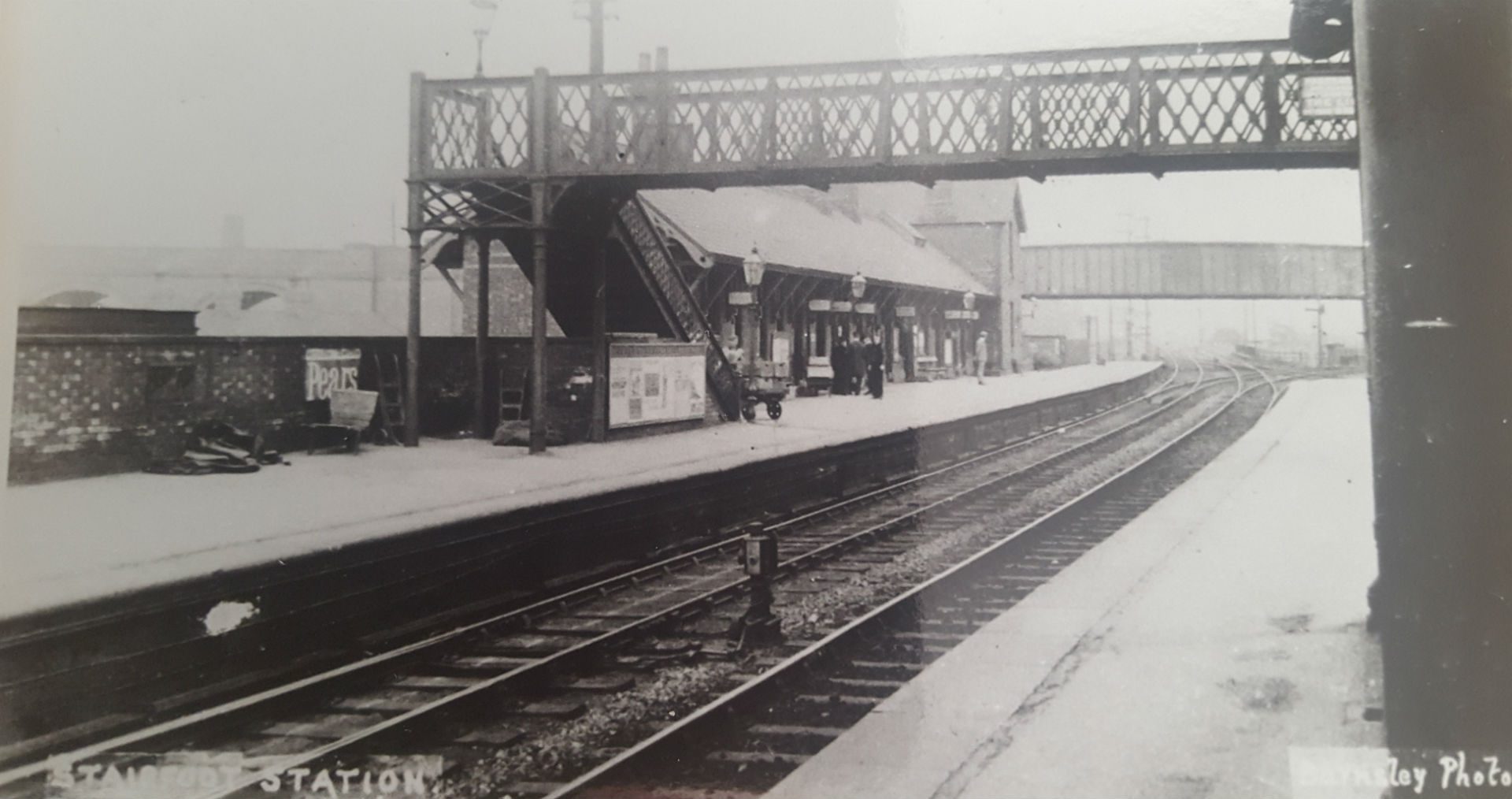
Stairfoot Station 1912 to 1913
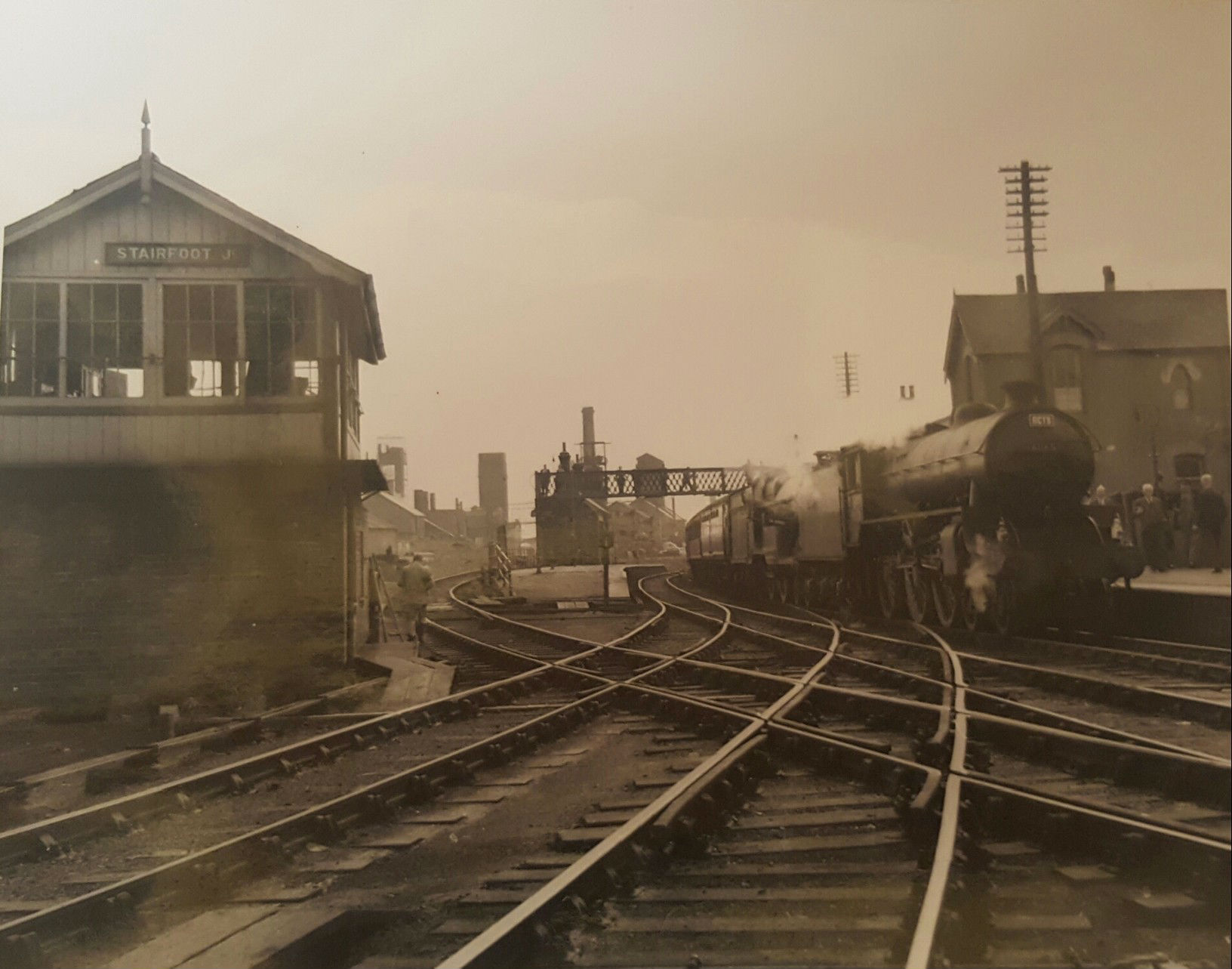
RCTS 1958 N
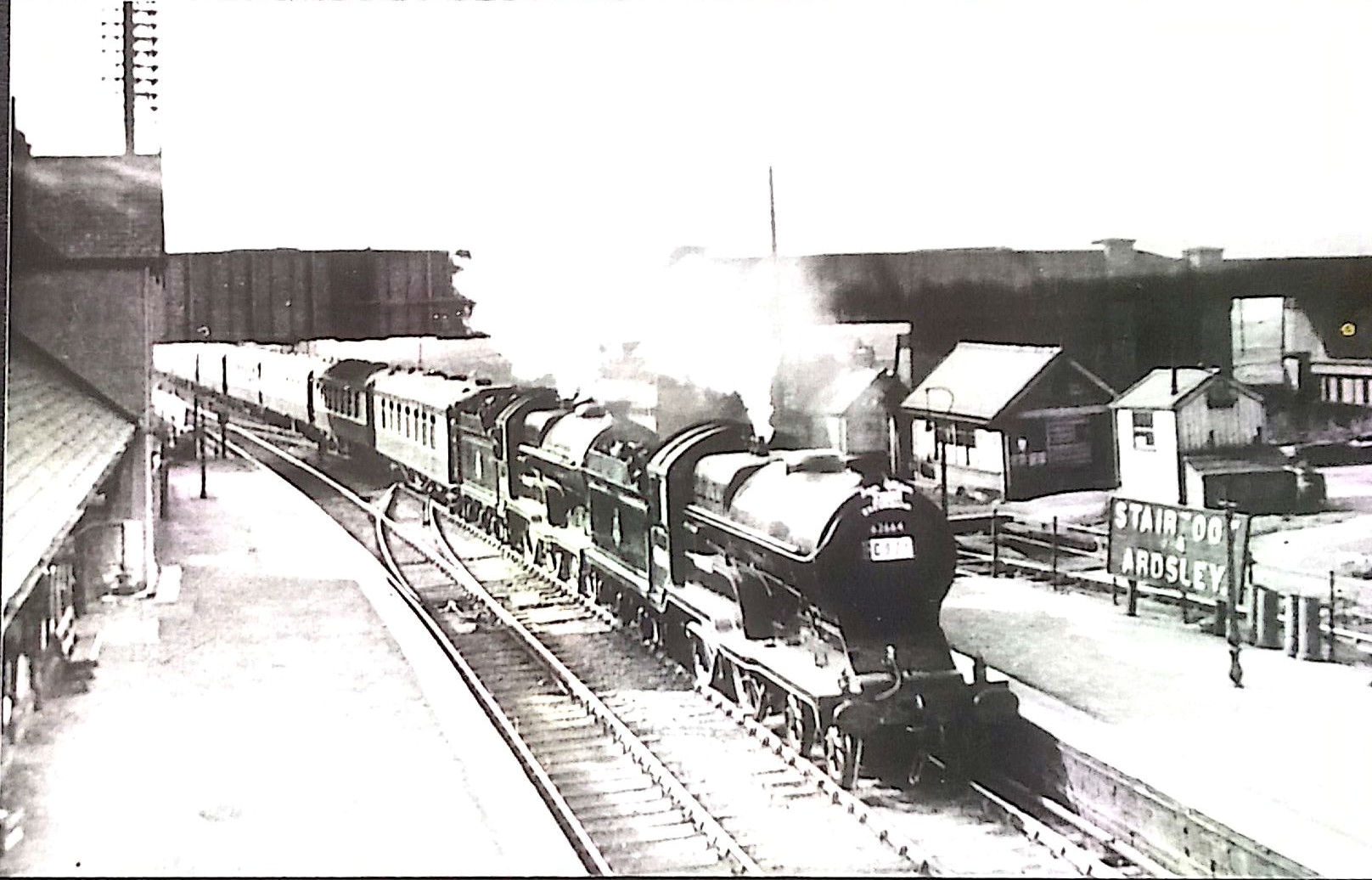
Pennine Pullman C
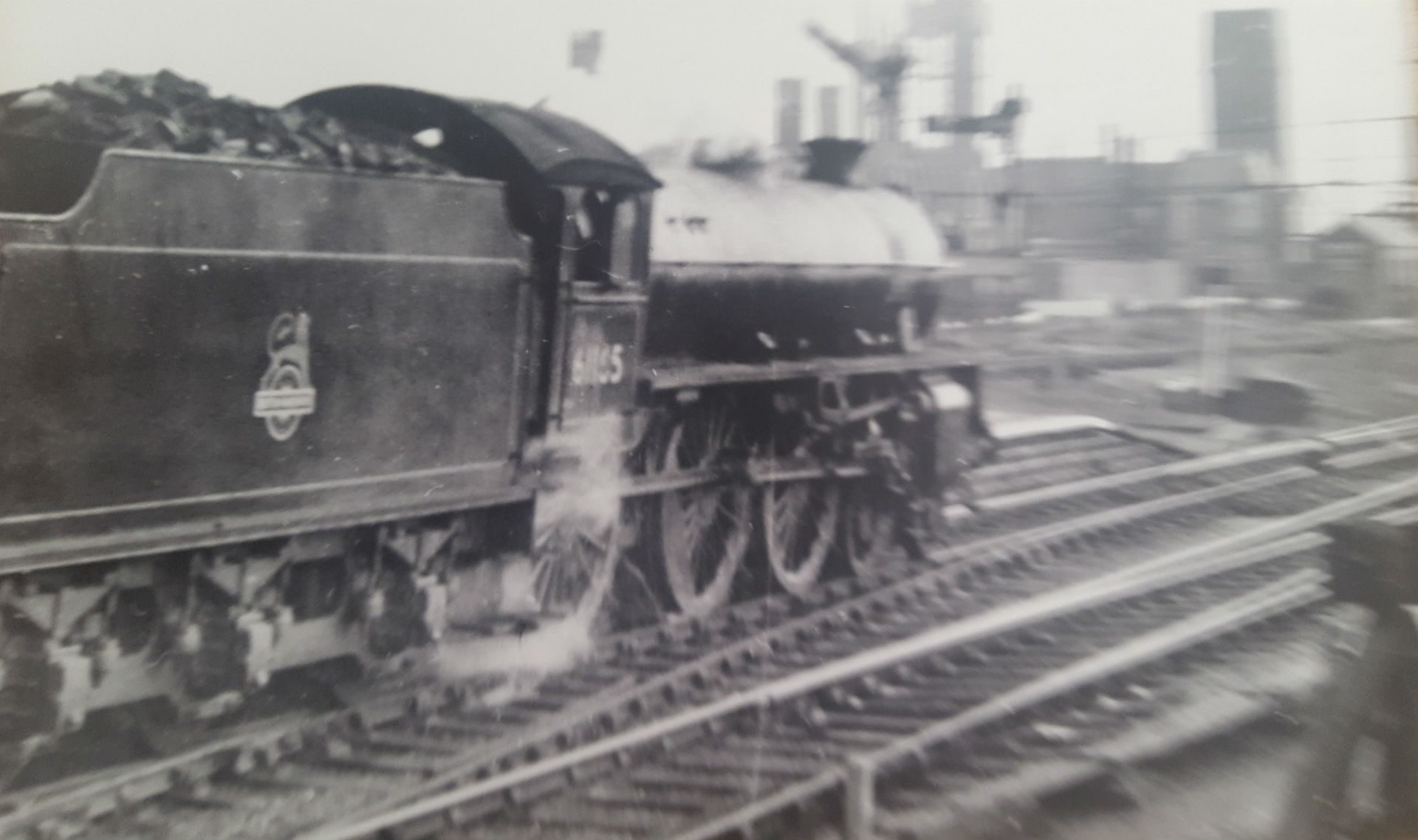
B1 Loco leaving Stairfoot to Doncaster mid 1950's
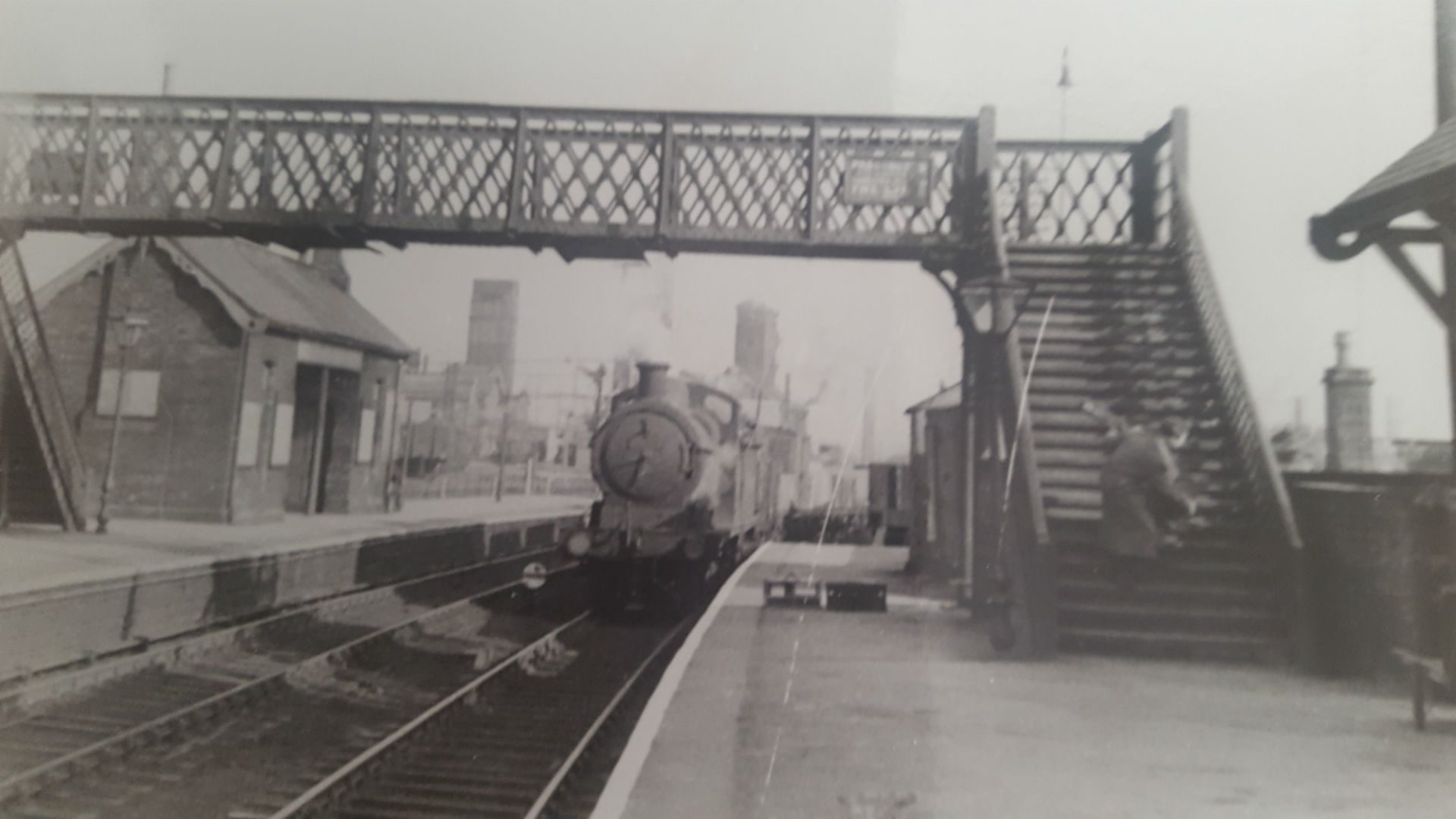
J 11 Coming through Stairfoot Station E
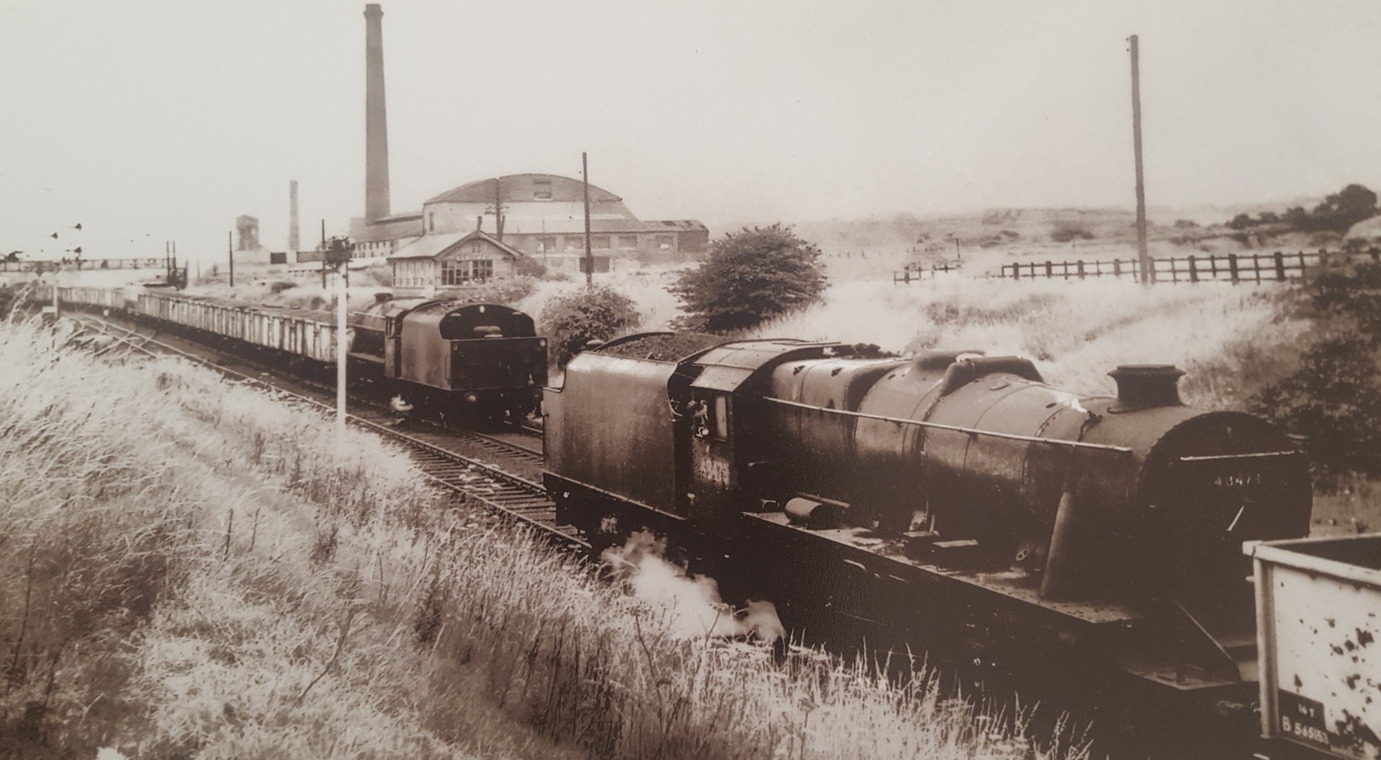
2 8F's Loco's New Oaks Junction July 1967
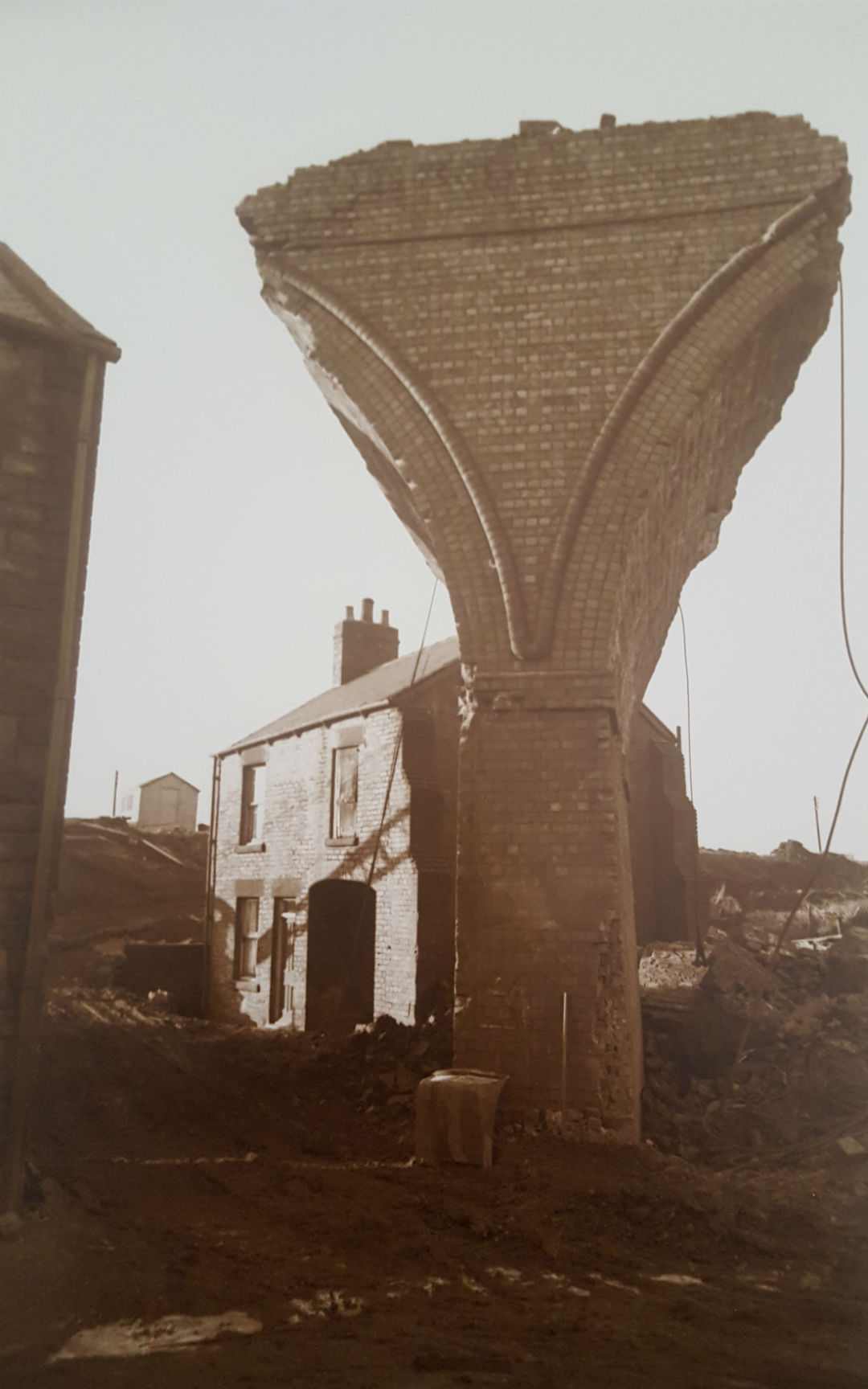
Demolition of viaduct 1
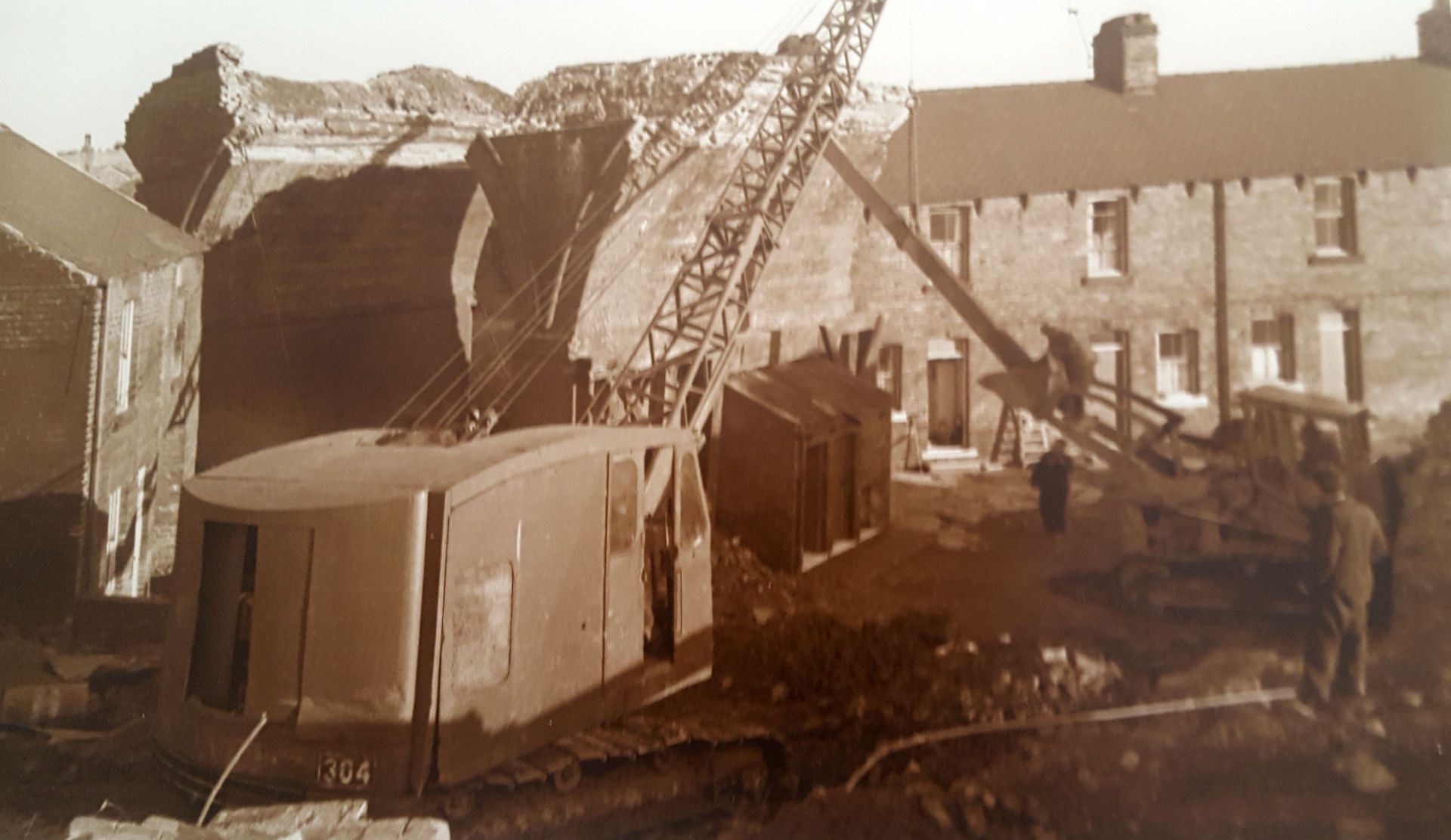
Demolition of Stairfoot Viaduct 2
Stairfoot Station Heritage Park
Copyright © Stairfoot Station 2023 All right reserved.
Designed by Bits and Pieces Computers
